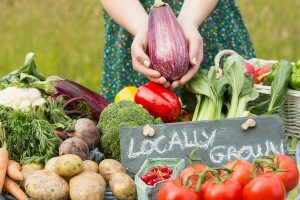Heide Kennedy, Arizona Farm Bureau Communications Intern
We often hear a lot about “superfoods” and how they are incredibly nutritious and good for your health. But what exactly makes a food a superfood? Read on to find out what makes foods able to be considered a superfood, some examples of superfoods, and a few ideas on how to incorporate them into your diet!

(photo credit : BigStockPhoto.com)
According to the Cleveland Clinic, there is no specific, hard, and fast definition for superfoods, but the term is typically used to denote natural foods that are exceptionally nutrient dense all while being relatively low in calories. Registered dietician Beth Czerwony says that superfoods are very high in vitamins, antioxidants, and minerals, and they also might be high in fiber, flavonoids, and healthy fats.
There are tons of examples of foods that are considered superfoods, and the following are some dietician-recommended superfoods.
- Flax seeds
- Chia seeds
- Watercress
- Walnuts
- Blueberries
- Kale
- Yogurt
- Eggs
- Oats
- Beans
- Quinoa
- Sea vegetables
- Cabbage
- Alaskan sablefish
When it comes to incorporating some of these superfoods into your diet, some you can just use as part of a meal or all by themselves, or others you can add to recipes to give it more of a nutritional punch. For example, you could make a salad using kale as the greens, or you could add some kale to a smoothie, you’re still getting the extra vitamins and minerals either way!
Want to read more about healthy eating? Check out the Fill Your Plate blog!

